How to Buy the Best Sleeping Bag

- Find expert tips to help you get a good night’s sleep
- Picking the right sleeping pad, bag liner, pillow or cot
- How to minimize smelly sleeping bag odor
To get a good night’s sleep in the cold, bring a tent suited for potential weather conditions, including winds or snow load. Pack an insulated sleeping pad or two, and bring a sleeping bag that will keep you warm.
KNOW YOUR BODY
If you are always wearing a T-shirt in camp when others are wearing a fleece — and you’re not cold — get a bag rated about 10 degrees lower than the lowest temperatures you encounter on trips. If you’re one of the first people to put on an insulated jacket while hanging around camp, get a bag rated 20-25 degrees lower than the coldest nights you anticipate.
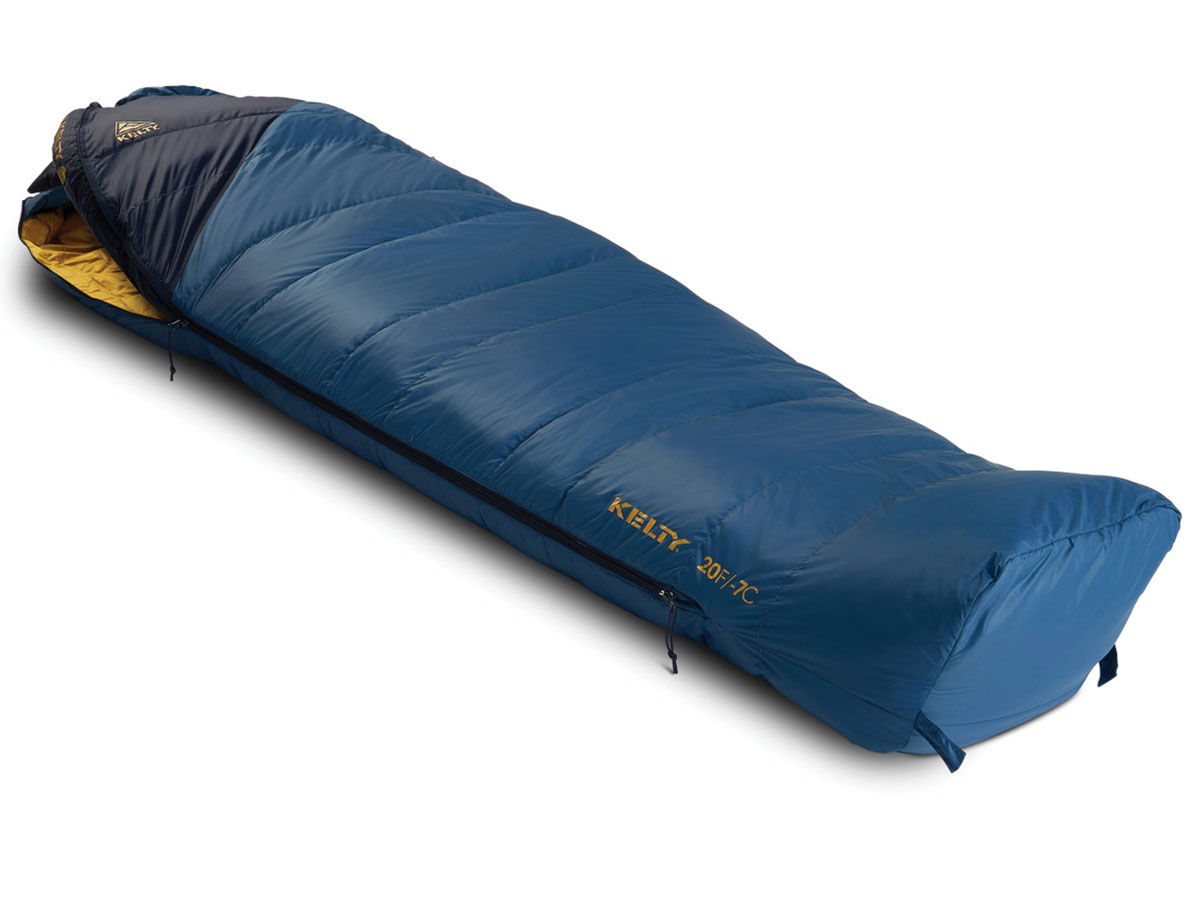
Looking for a versatile bag for autumn, winter and spring that you can layer up inside when you push the bag’s temperature limit? We recommend KELTY’S COSMIC DOWN 20° ($150, kelty.com). In many locations, a 20-degree bag can be used year-round, and while you might have to unzip it in summer or cinch it down and sleep in layers of clothing in cold temps, it’s about as versatile a bag as you can buy. It’s trim with trapezoids-shaped baffles and a big footbox that makes the bag feel less confining. It’s made from fully recycled fabrics with a planet-safe, water-repellent coating. And we loved the zippered stash pocket.
KNOW YOUR BUDGET
Prices vary depending on factors like type and quality of insulation, as well as materials used. For instance, a bag rated to zero degrees uses much more insulation than a 30-degree bag.
TEMPERATURE RATINGS
Sleeping bag temperature ratings aren’t usually accurate, says Steve Lutz, a designer for Alps Mountaineering and a Scouter who has taken Scouting America’s cold-weather leader training.
“If it’s zero degrees when you camp, you won’t suffer harm in a zero-degree bag, but you’ll likely be a lot more comfortable in a negative-20-degree bag,” says Lutz.
Most sleeping bags are rated for the extreme temperature you can use them in. Some also list a comfort rating. Get a bag rated for colder temperatures than you expect. And whatever bag you choose, always travel with extra layers you can sleep in if you’re cold, including a down jacket and fleece or insulated pants.
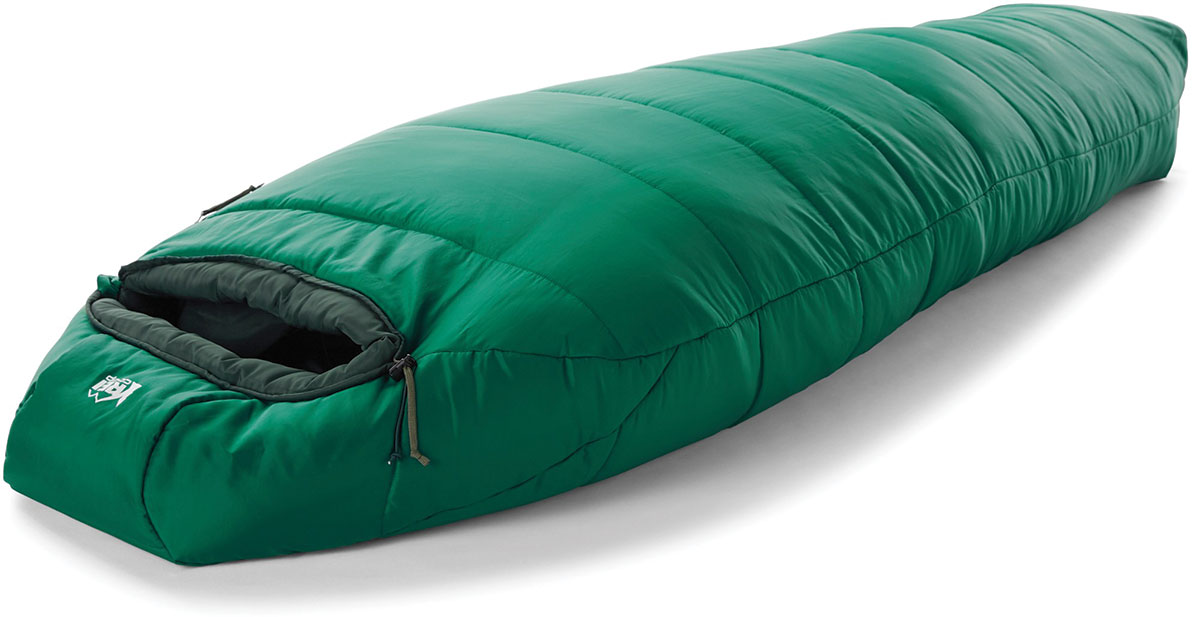
If it’s well below freezing, REI’S FROSTBREAK 5° ($140, rei.com) is a great choice. It uses four layers of synthetic offset insulation to prevent cold spots and has double draw cords so you can adjust the hood and neck separately. The external stash pocket is perfect for a headlamp. And because this bag also comes in short, regular and long, it fits everyone.
SYNTHETIC VS. DOWN INSULATION
Winter sleeping bags are insulated with either goose down or a polyester synthetic. Both trap air warmed by your body and form a protective insulating envelope around you. Down is warmer by weight, packs smaller than synthetic and is almost always more expensive. Some down is treated to repel moisture, but in general, when down gets wet, it loses its air pockets and ability to insulate.
Synthetic insulation is warm even if it gets damp, but many people think it doesn’t feel as good to sleep in as down. Most synthetic insulated bags are more affordable than down ones. When temperature ratings are equal, higher-quality insulation is always lighter.
WEIGHT
This matters when you’re backpacking, but less so when car camping.
Lighter, higher-quality insulation costs more, but you can also reduce weight and bulk by not buying a 15-degree bag when you need only a 30-degree bag.
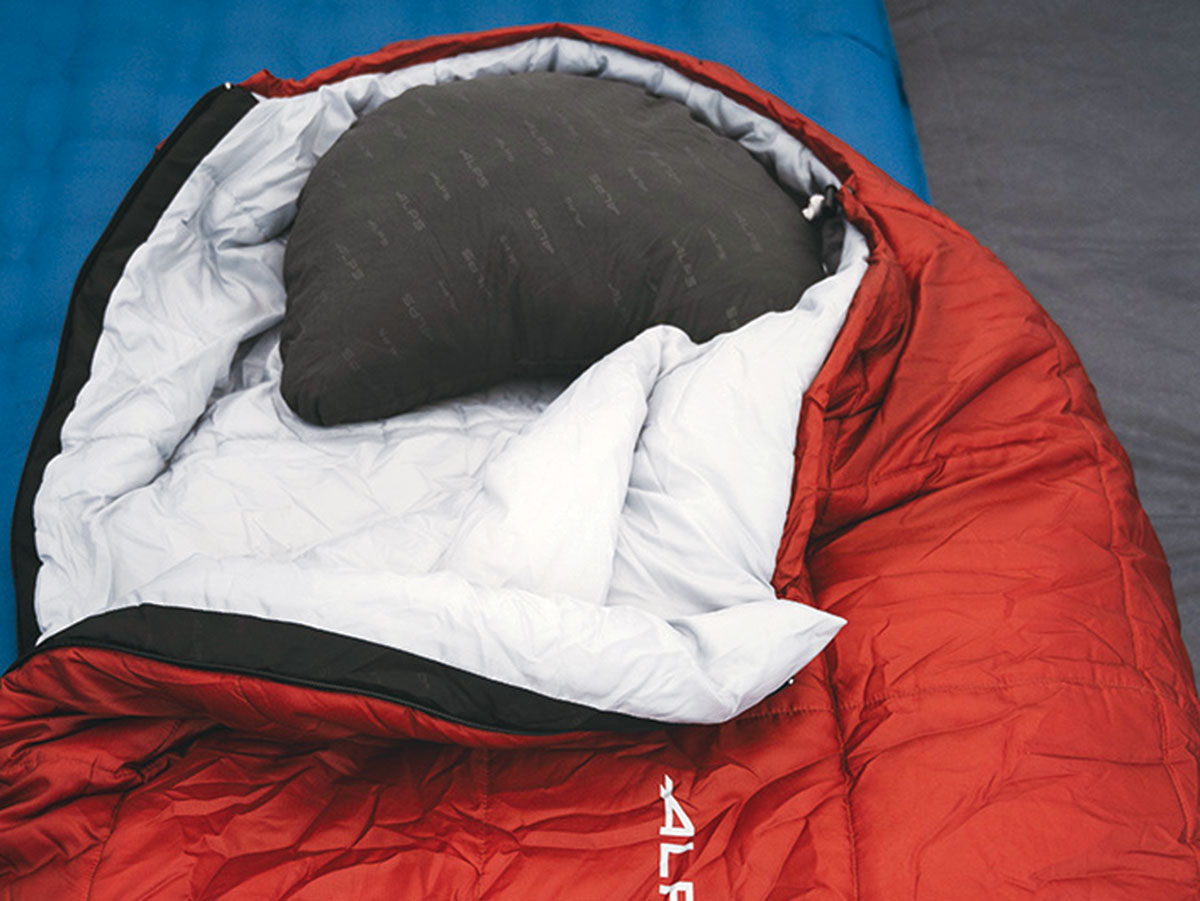
One of the most affordable true winter sleeping bags you can buy, ALPS MOUNTAINEERING’S VIBE 0º ($120, alpsmountaineering.com) has a spacious cut and neck and zipper draft collars. The synthetic insulation is offset to prevent cold spots. The bag is basic, but the price is right, which makes it great for anyone interested in trying winter camping. It comes in regular and long sizes.
MUMMY VS. RECTANGULAR SHAPE
The snugger a sleeping bag fits, the less air you have to heat, and the warmer you’ll be. A mummy-shaped bag is often trimmer. But if you’re a side sleeper or you flip-flop during the night, a mummy may feel restrictive. More affordable bags are often cut large unless they’re specifically for youth.
SLEEPING BAG FEATURES
When you’re camping in cold weather, a draft collar around the hood of your sleeping bag and a draft tube along the inside zipper will keep your body heat inside. If your sleeping bag doesn’t have a hood, wear a warm hat or fleecy buff, and cinch the top of the bag to stay warm.
An easy-to-reach internal or external pocket is a great place to store a headlamp. Two way zippers or vents make a cold-weather bag more versatile because they allow you to adjust your temperature.
Whichever sleeping bag you buy, consider upgrading the compression stuff sack to one that’s lighter and easier to compress than the one the bag came with.
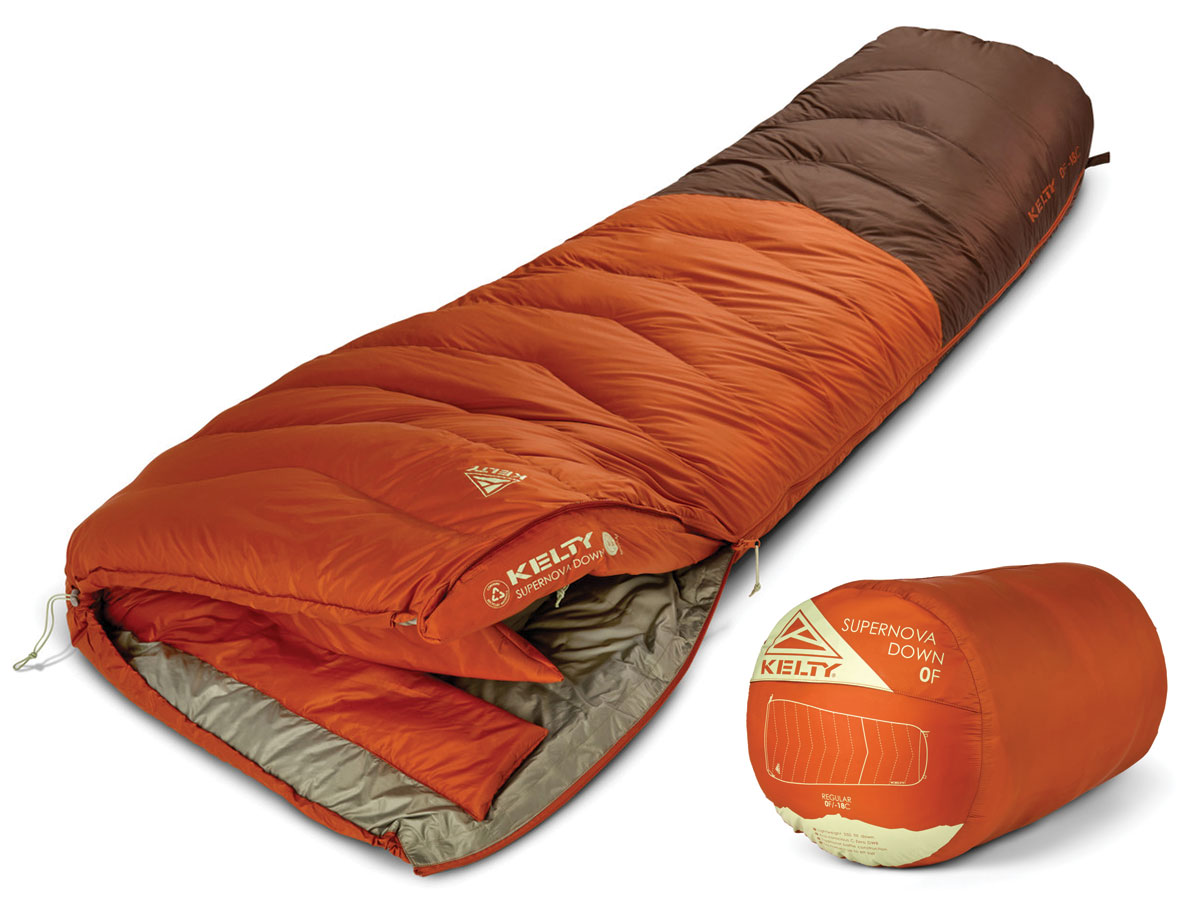
Kelty’s semi-rectangular SUPERNOVA DOWN 0° ($250, kelty.com) bag uses 550-fill-power down to keep you warm on winter adventures. The bag has a spacious cut with a 270-degree zipper so you can unzip it flat and use it as a blanket when it’s warmer out. The Supernova Down has a full draft tube and collar, but it doesn’t have a hood.
GEAR GUY’S ADVICE?
Get what you can afford. With an inexpensive bag, you can still get outdoors, which is what’s most important, right? If and when you have the dough for a nicer bag, it will make your wilderness adventures a little more luxurious.
CARING FOR YOUR BAG
Properly cared for, a sleeping bag can last 10-20 years. Body oils can compromise insulation, so to prolong your bag’s life, you should sleep in clean base layers. Air out your bag after each night of camping, but don’t leave it exposed to sunlight for long periods.
Post-trip, hang the bag to dry for a day or two, and then place it in a big storage sack or an old pillowcase. Be sure to store it in a dry place. If your bag gets really dirty or starts losing loft, follow the manufacturer instructions for washing it.
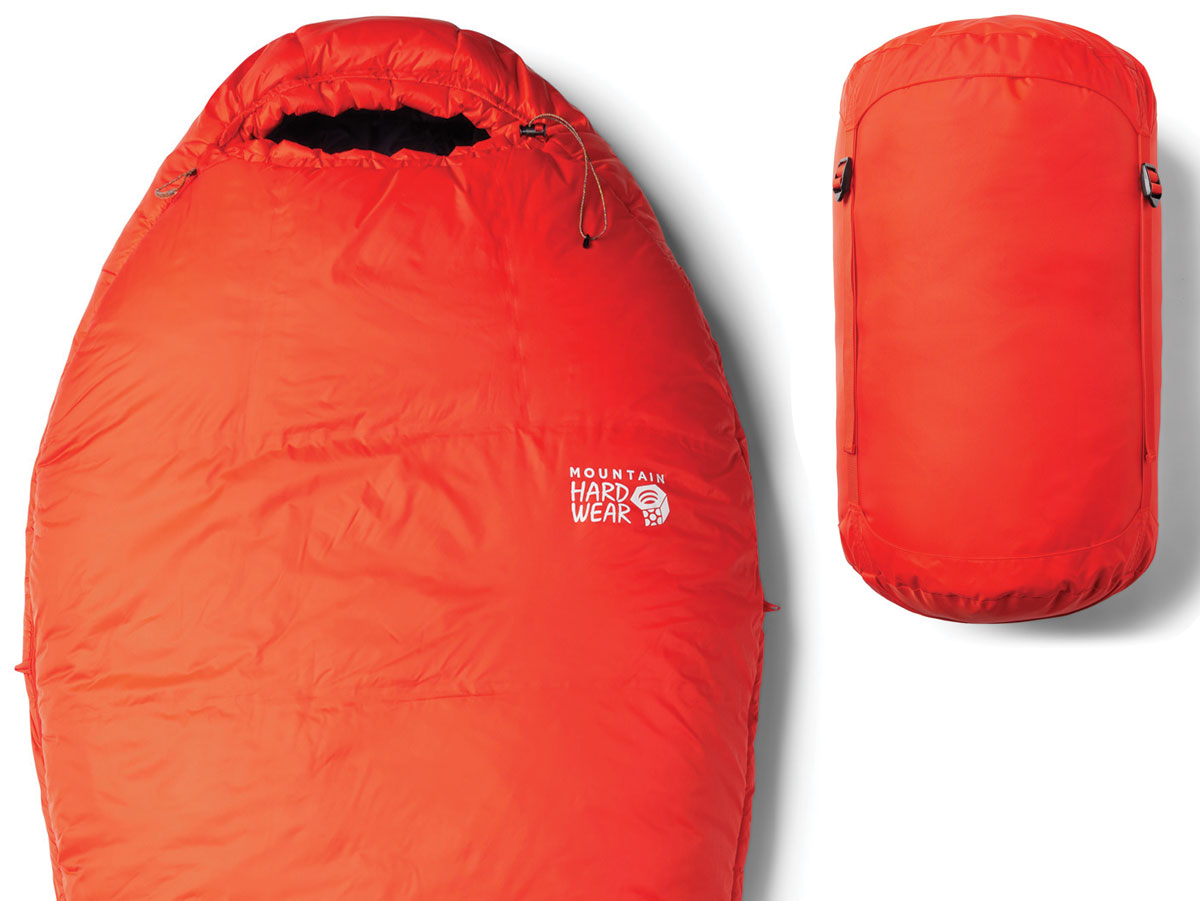
For deep winter camping, we like MOUNTAIN HARDWEAR’S LAMINA -20°F ($310, mountainhardwear.com). Seamless construction prevents cold spots and keeps the loft in the synthetic insulation. The light, compressible, water-repelling shell feels silky and makes this bag 15% lighter than previous versions. It comes with left or right zippers in regular and long sizes with a spacious storage sack and a compression stuff sack.
WINTER HACKS FOR STAYING WARM
Here are a few winter hacks for staying warm:
Always use an insulated sleeping pad. Fill a Nalgene bottle with boiled water right before bed. Slide the bottle inside a sock, and put it inside your sleeping bag. That kick-starts the warming process when you first climb into your bag. Lutz also recommends changing into clean, dry clothing before zipping up for the night.
“As you hike, your clothes absorb moisture,” Lutz says. “If you get in your sleeping bag without changing, you risk making your bag damp, which is uncomfortable. Hang your dirty clothes and boots in a tent vestibule to dry.”
I’m going to the Peace Corps and need something that will last me for 2 years! The PC gives us a sleeping bag for the really cold months so I need something for 5-20 degree weather. I can’t take much with me so it has to be super compressible and light! Any recommendations?
and also the big agnes bags come with a intagrated pillow sleeve wich is nice :]
My Mountain Hardwear Lamina is a 20 degree bag. Used at summer camp in 80 degree nights. Was well ventelated and never got too hot but still keeps me warm in the winter. Weighs like 2 pounds!
Sometimes the “P-X” of a local army base may let civilian campers and dependents of U. S. Army personnel purchase the inventory over run of U. S. Army Mummy Sleeping Bags at U. S. Government Auctions. The Mummy Sleeping Bags are quite warm in winter; however, most require dry clean only when washing. Sometimes a person can launder the sleeping bag by washing the sleeping bag by hand and then letting the sleeping bag air dry. For U. S. Army dependents, the “P-X” is a great place to shop for over run inventory camping equipment.
Our military bags are warm (two separate bags and a Gore-Tex bivvy) but heavy. They weigh over 10 pounds. You can get better civilian bags cheaper. I prefer my Northface PolarGaurd 3D!!!!
i need your help on were to get sleeping bags i am going camping next week and dont know were to go please replay fast
REI, Cabelas, or Gander MT.
remember if you go to Gander Mountain to take your scout card and tell them you are a scout and you should get a discount.
u can find good ones ant bass pro shop or cabela’s. I hope that helps
Jonathan, you might want to do some research before buying a bag that warm. I rarely recommend a bag that is rated for much colder than 32F, they get to be too warm for most trips. I think it is better to get a bag that is roomy enough to allow you to wear a vest or jacket inside of…more versitile. I like Montbell bags. I’ve never used a compression bag, so I can’t help you there.
Depends where you live… We live in Minnesota and used to live in Utah, I won’t buy a bag rated above 30′ not worth it here. You can always sleep on top of the bag in the summer with a blanket, you can’t make it warmer in the winter.
You must live in Florida or Texas. anything rated for more then 15 degrees is out in my book! of course when you live deep in the Idaho Mountains you need a warm sleeping bag!
I use a Slumber-Jack Super Guide 30 degree bag for summer, and it works fine. I also have a REI 0 degree bag for winter camping, and that works well. If you don’t do winter camping, don’t buy a 0 degree bag! You will sweat to death during the late spring and summer. Get a bag that suits the environment of where you camp.
I think I saw good compression stuff sacks at the Recreation Outlet, and for the sleeping bag I think they have those too.
Hey guys –
My dad and i are going to spend about ten days backpacking in Wyoming. Do any of you know where i could find good reliable compression bags? Also I have a huge down sleeping bag – do any of know where i could find a good 20- degree synthetic sleeping bag.
-URGENT
Online